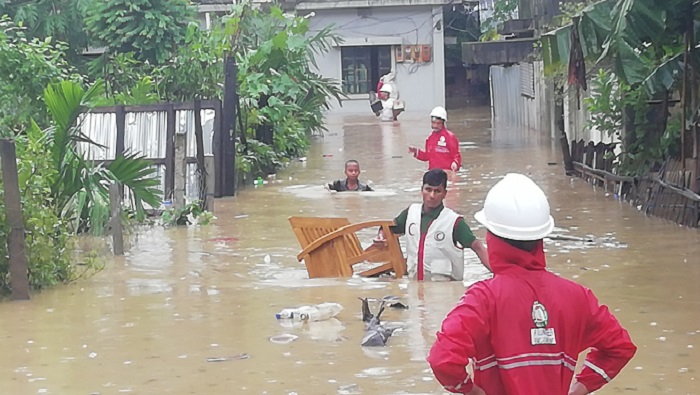
Muscat: Rising floodwaters in South Asia are threatening nearly 6 million people, according to the International Federation of Red Cross and Red Crescent Societies (IFRC).
In a press release, the humanitarian organisation stated that over one million people were displaced in the Indian state of Assam alone, with one third of Bangladesh underwater and parts of southeastern Nepal submerged.
Xavier Castellanos, Regional Director for Asia Pacific, International Federation of Red Cross and Red Crescent Societies (IFRC), said, "We are seeing growing numbers of displaced and increasing loss of life with each day of rain. Entire communities have been cut off by rising waters, increasing the risk of people going hungry and getting sick. All of our efforts right now are focused on reaching these people and ensuring that they have the supplies and support needed to withstand coming floods.”
In Bangladesh, 14,000 have been displaced and more than 11,000 homes have been destroyed according to IFRC. They added that heavy rains have also caused over 200 landslides in Cox's Bazar, which hosts hundreds of thousands of Rohingya refugees.
Volunteers in the three countries were racing to deliver emergency aid to communities, the humanitarian organisation stated.
Castellanos added, “We know that preparedness saves lives. In all three countries, Red Cross and Red Crescent teams prepositioned supplies ahead of the rains so that volunteers can quickly deliver food supplies, first aid, clean water, temporary shelters and hygiene kits to affected communities.”
IFRC also stated that over 1,000 volunteers from the Bangladesh Red Crescent, Nepal Red Cross and Indian Red Cross were working alongside local authorities to support search and rescue efforts and deliver first aid.
The organisation added that the number of people affected was likely to rise and that fears of potential food shortages and disease outbreaks were growing.